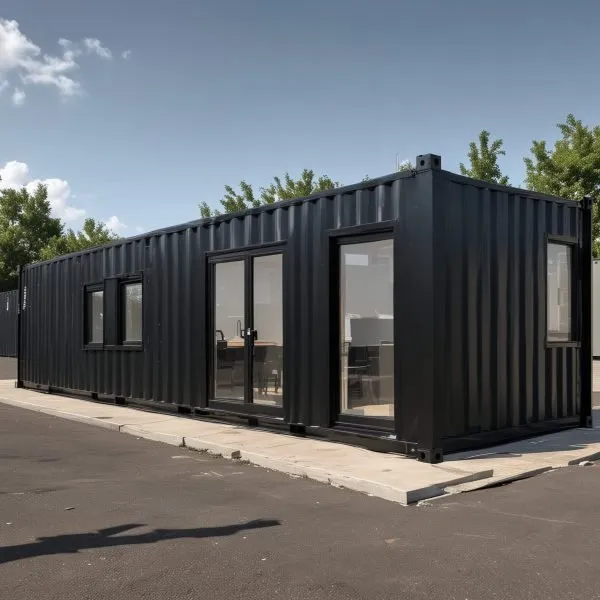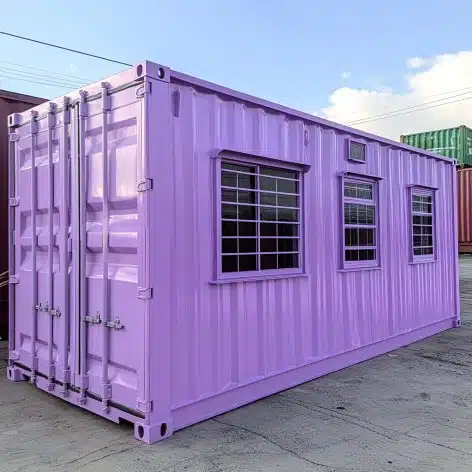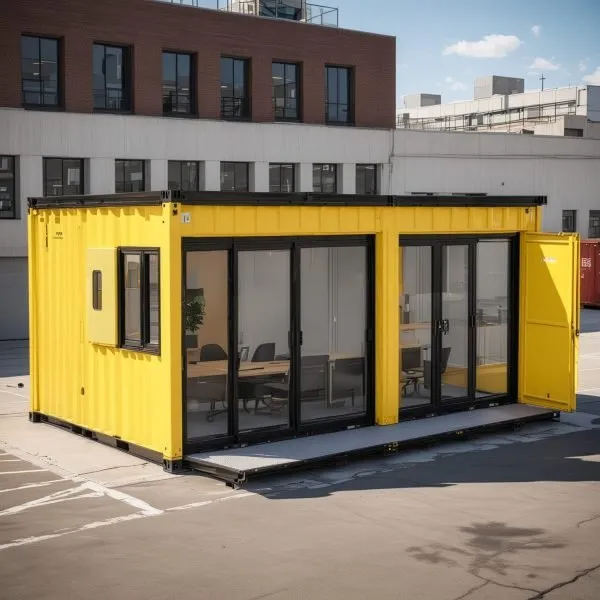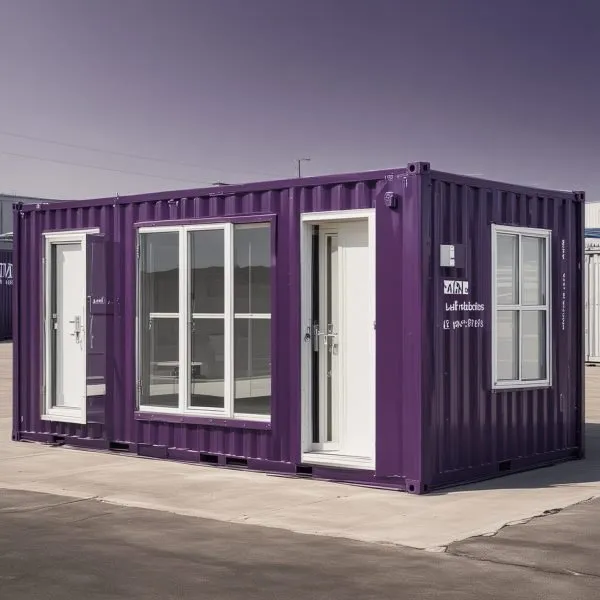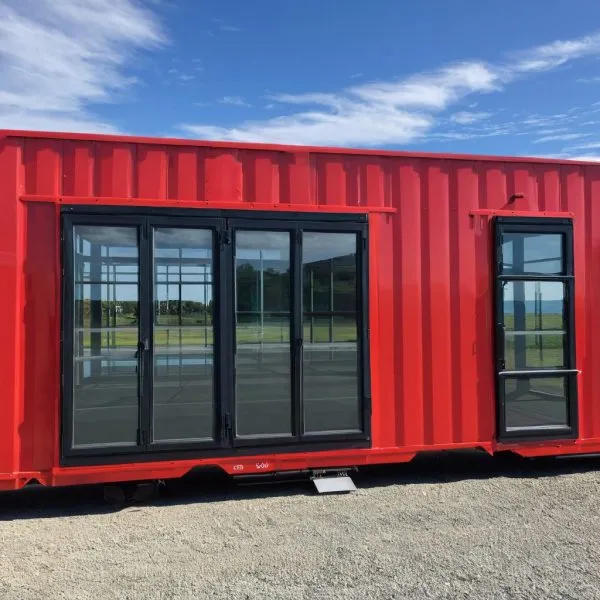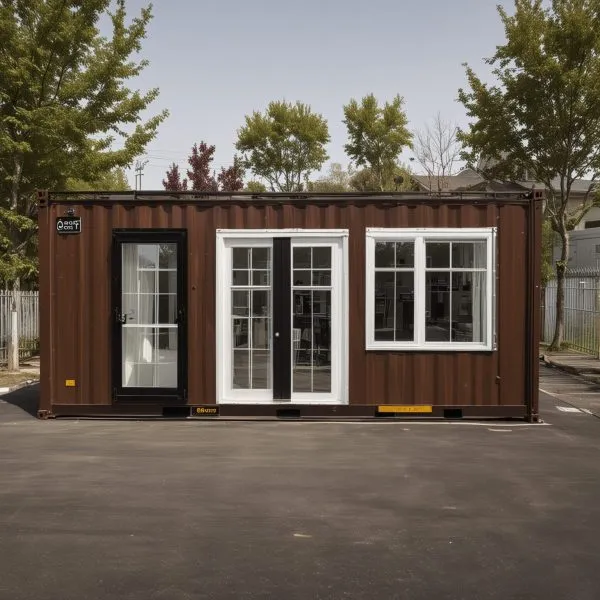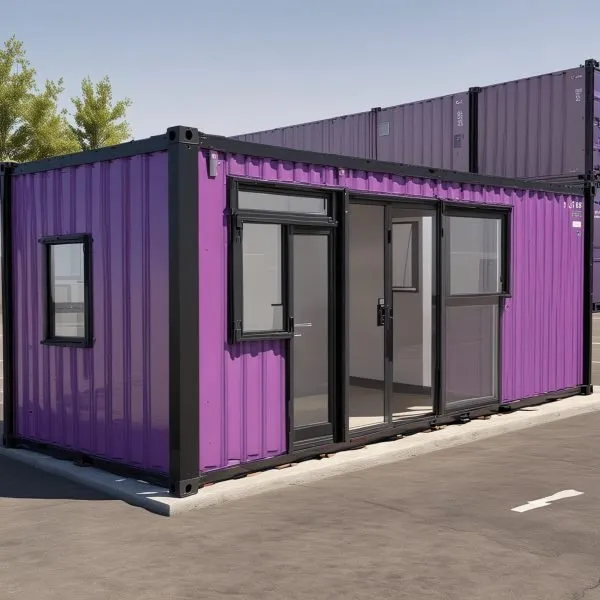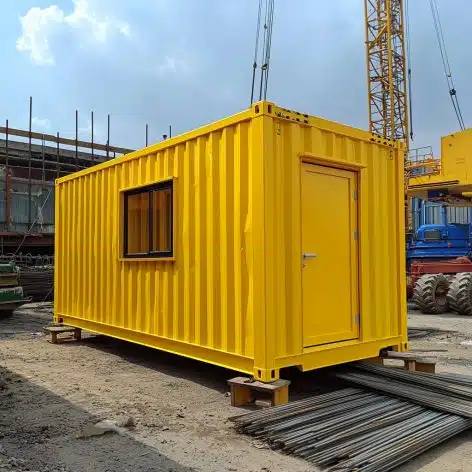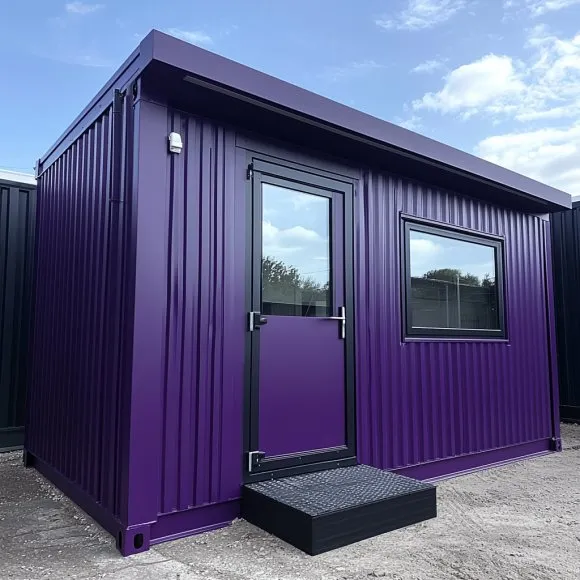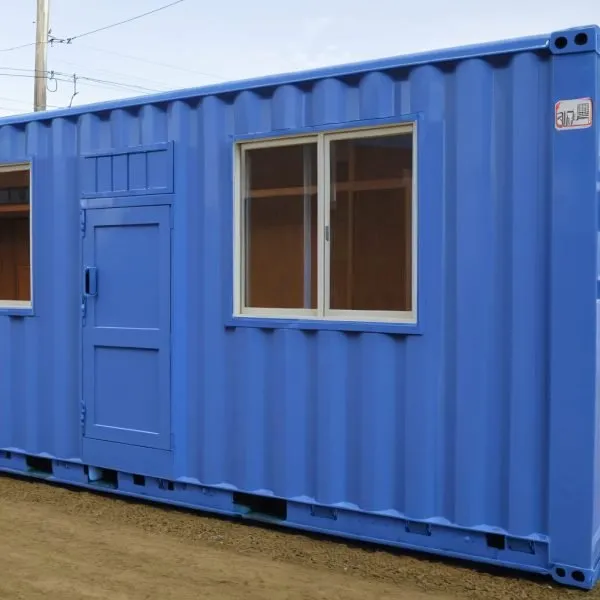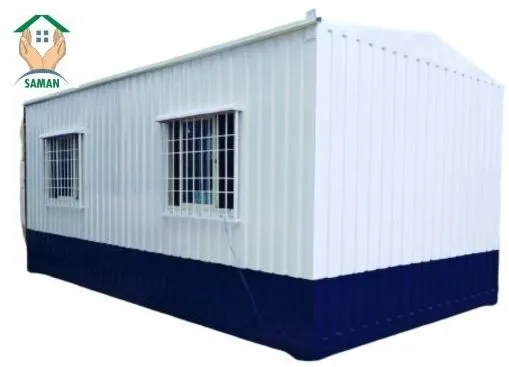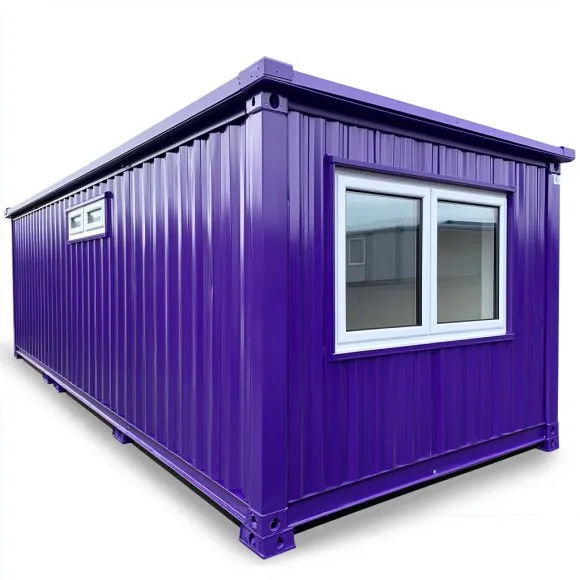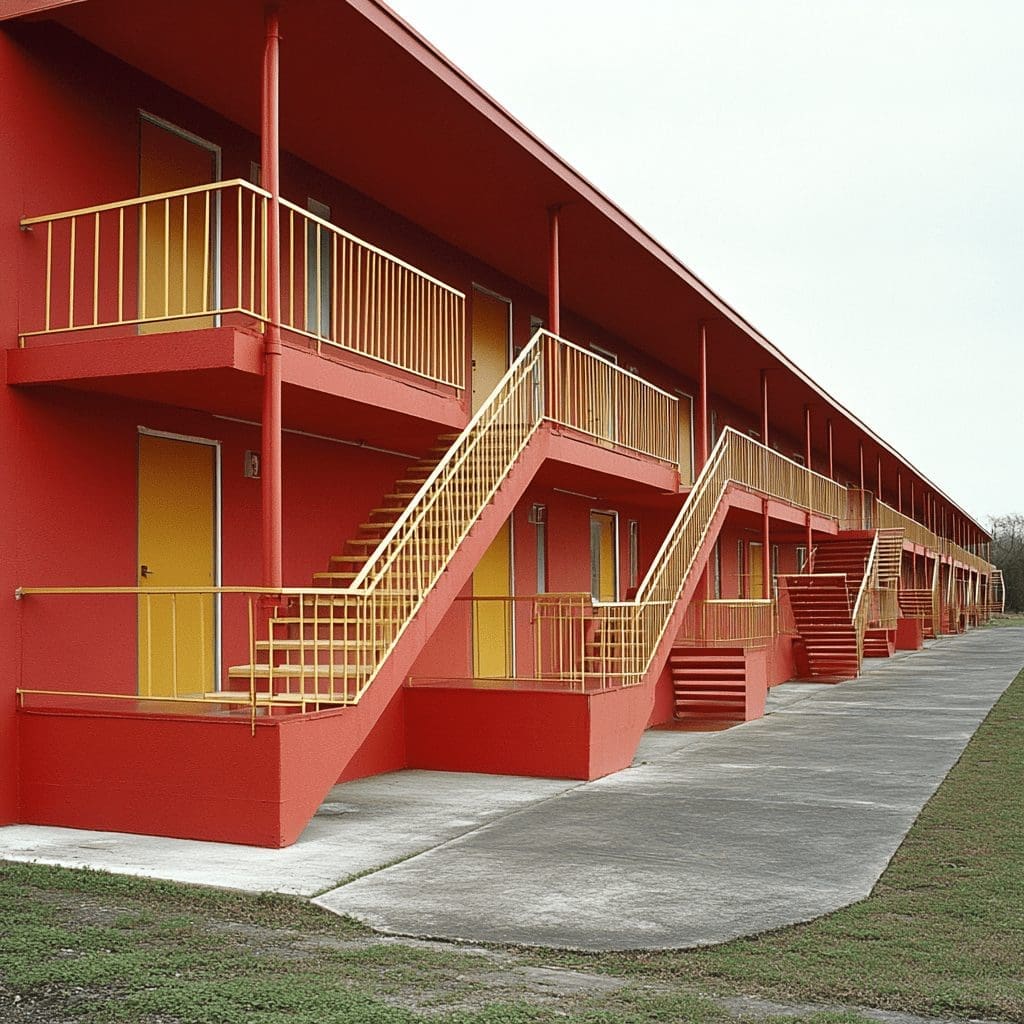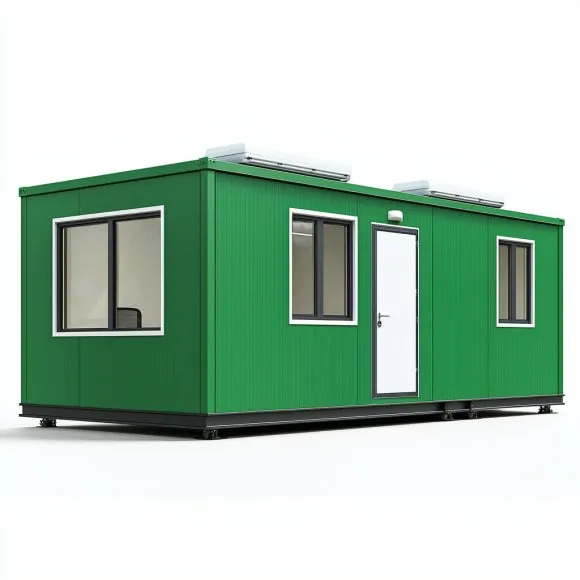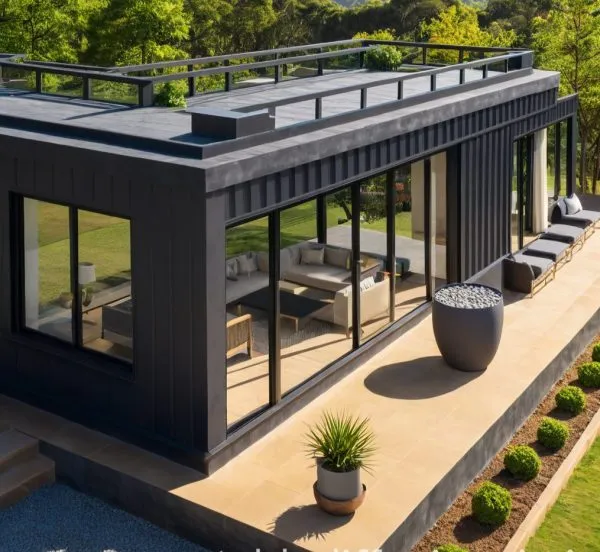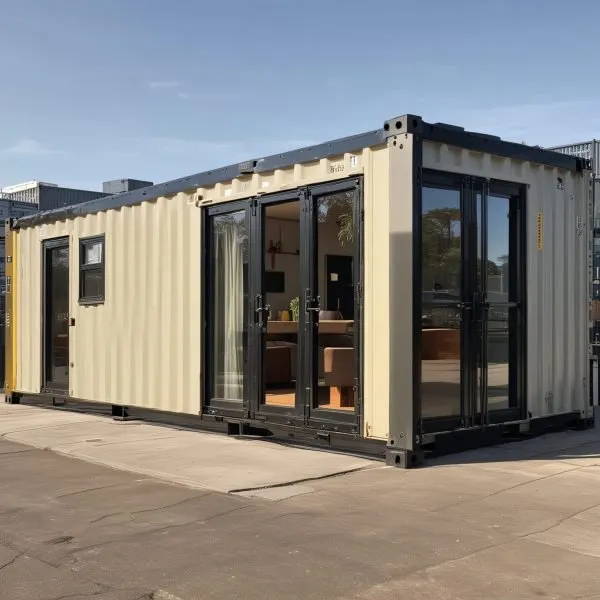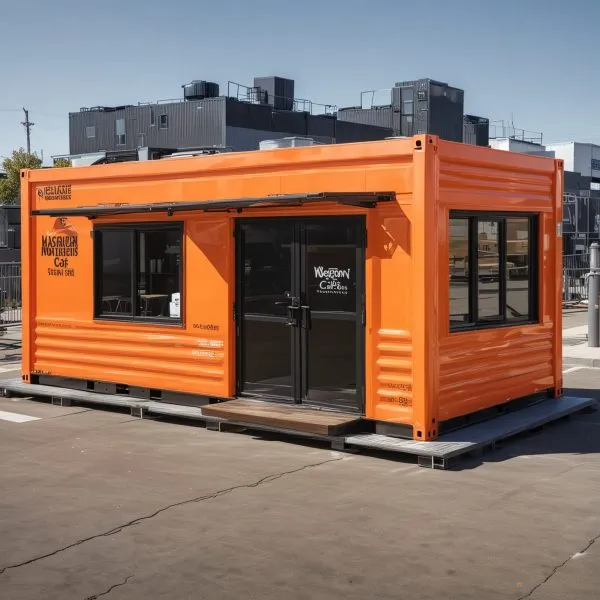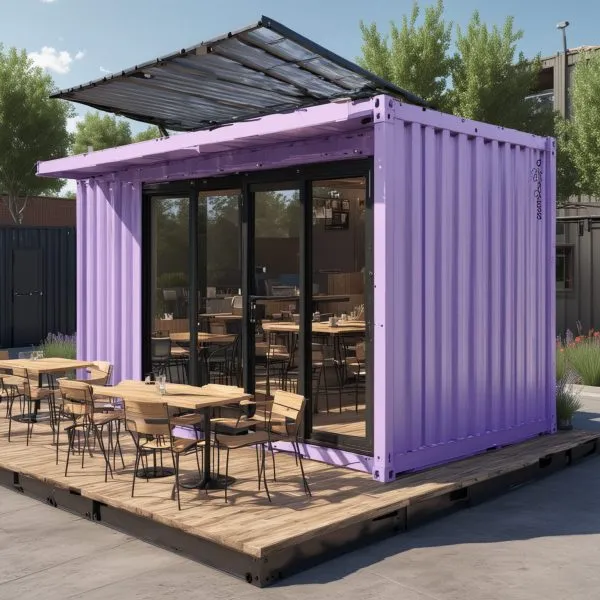Temporary Sheds: Your Guide to Small, Portable, and Movable Storage Solutions
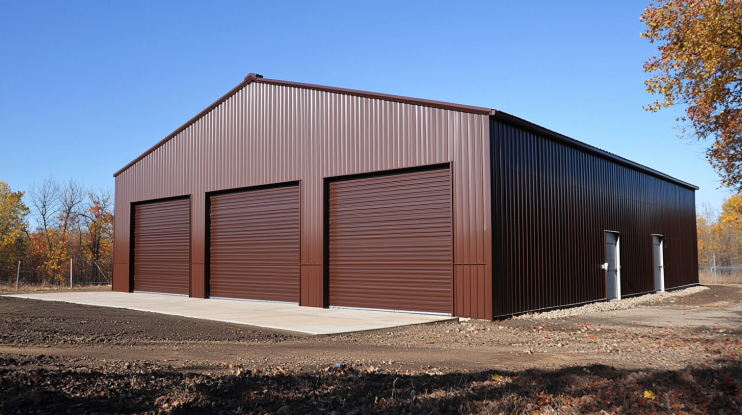
Introduction to Temporary Sheds
Temporary sheds have become a practical choice for homeowners and businesses looking for a flexible, convenient storage solution. Unlike permanent structures, temporary sheds offer the advantage of easy setup and mobility, making them suitable for both short-term and long-term needs. These sheds come in various forms, including small portable storage sheds, movable storage sheds, and collapsible storage sheds, allowing users to select an option that best fits their specific requirements.
Why Choose a Temporary Shed?
Temporary sheds are ideal for individuals who need extra storage space without the commitment of a permanent building. These sheds can be quickly assembled and disassembled, making them perfect for storing seasonal items, gardening equipment, tools, or even serving as a temporary workspace. Many users find temporary sheds valuable for situations that require flexible storage, like moving, renovating, or managing fluctuating storage needs.
For a comprehensive guide on the advantages of portable storage solutions, visit the Portable Sheds Complete Guide, which covers various types of portable sheds, including temporary and movable options, to help users make informed decisions.
Temporary vs. Permanent Sheds: What’s the Difference?
The main distinction between temporary and permanent sheds is mobility. Temporary sheds are designed for easy relocation, allowing users to move them as needed, while permanent sheds are built on foundations and require more extensive installation. Temporary sheds, such as small portable storage sheds, offer a lightweight yet durable solution, often constructed from materials like plastic, metal, or treated fabric, to withstand moderate weather conditions.
Temporary sheds provide the flexibility to change locations or store them away when not in use. For example, collapsible storage sheds can be folded down and stored compactly, saving space and reducing the need for permanent outdoor storage.
For more detailed insights on different shed types and features, the Portable Sheds Complete Guide offers a breakdown of popular options, materials, and user recommendations.
Common Uses for Temporary Sheds
Temporary sheds are versatile, commonly used in backyards, gardens, and even work sites. They provide ample storage for various items without requiring large footprints or extensive installation. Popular uses include:
- Garden Tool Storage: Protect tools and supplies from weather without taking up indoor space.
- Seasonal Storage: Ideal for keeping holiday decorations, outdoor furniture, or seasonal equipment.
- Workspace: Temporary sheds can also be modified to serve as small workshops or hobby spaces.
For a deeper understanding of how temporary sheds can cater to different needs, refer to the comprehensive Portable Sheds Complete Guide.
If you’re looking for a flexible storage solution that you can set up and dismantle with ease, foldable storage sheds may be the perfect choice. Learn more about how these compact, space-saving options offer a quick setup in our Foldable Storage Sheds Guide, which covers the benefits of portability and easy storage.
Interested in transforming a shed into a cozy living or retreat space? Portable shed tiny houses provide the ultimate compact living experience, whether used as a guest room or creative studio. Discover more ideas in our Portable Shed Tiny Houses Guide and make your space truly unique.
What is a Small Portable Storage Shed?

A small portable storage shed is a compact and convenient solution designed to provide additional storage without taking up much space. These sheds are ideal for homeowners with limited backyard or garden areas or for those who need a temporary storage solution that can be easily relocated. Small portable sheds are perfect for storing essential items, such as gardening tools, seasonal equipment, or other personal belongings, in a safe and accessible outdoor space.
Key Features of Small Portable Storage Sheds
- Compact Size: Small portable storage sheds are typically designed to fit into tight spaces, making them an excellent option for smaller yards or patios. These sheds come in various sizes, generally ranging from 20 to 80 square feet, providing just enough space for essential items without overwhelming the landscape.
- Ease of Setup and Portability: One of the primary advantages of these sheds is their portability. Many small sheds are designed for easy assembly, often featuring interlocking panels or snap-together components. They’re easy to dismantle as well, allowing users to move them around or store them away if the shed isn’t needed year-round.
- Durable Materials: Despite their smaller size, these sheds are often constructed from durable materials like resin, metal, or treated wood to withstand outdoor elements. Resin and plastic are popular for their lightweight nature and resistance to rust and rot, while metal sheds offer additional durability for those in harsher climates.
For more information on selecting the right type of portable shed and exploring options suited to your needs, you may refer to the Portable Sheds Complete Guide, which provides insights into various shed sizes, materials, and installation tips.
Applications of Small Portable Sheds
A small portable shed is versatile enough for numerous uses, especially in residential settings where efficient space utilization is essential. Some common applications include:
- Garden Storage: Ideal for storing gardening tools, small lawn equipment, fertilizers, and plant supplies, keeping them organized and accessible.
- Seasonal Equipment Storage: A compact shed can hold seasonal items, such as snow blowers, bicycles, or holiday decorations, freeing up space in the garage or basement.
- Pet Supplies and Outdoor Toys: Families with pets or children often use small sheds to keep outdoor toys, pet cages, or supplies secure and protected from the elements.
Whether used seasonally or year-round, small portable sheds offer a convenient, affordable way to manage storage without making a long-term commitment. For more advice on selecting the right small shed and understanding the best materials for durability, check out the Portable Sheds Complete Guide.
Types of Temporary Storage Sheds
Temporary storage sheds come in various types, each designed to meet specific storage needs, offering flexibility for both residential and commercial users. From movable storage sheds to collapsible storage sheds, these versatile options provide essential storage without requiring a permanent setup. Understanding the different types helps users choose a shed that matches their usage, climate, and space constraints.
1. Movable Storage Sheds
Movable storage sheds are designed for easy relocation, making them ideal for individuals who may need to move their shed within their property or take it with them during relocation. These sheds typically have features that simplify transport, like lightweight frames or modular construction. Movable sheds are a popular choice for those who want flexibility without compromising on storage space or functionality. Often made from materials like metal or reinforced plastic, these sheds can withstand outdoor conditions and are easy to set up.
For additional information on how movable storage options can serve various needs, refer to the Portable Sheds Complete Guide, which provides insights on the best types of portable and temporary storage solutions.
2. Collapsible Storage Sheds
Collapsible storage sheds are a unique solution for individuals looking for easy setup and takedown. As the name suggests, these sheds can be collapsed or folded when not in use, making them highly portable and space-efficient. Collapsible sheds are usually constructed from flexible materials like polyethylene fabric, supported by metal or plastic frames. They are suitable for storing items temporarily or for seasonal use, such as during gardening season or for storing holiday decorations.
These sheds are particularly useful for renters or homeowners with limited outdoor space who may not need a permanent storage solution. The convenience of collapsing and storing them away during off-seasons makes them a practical choice. For more tips on collapsible storage options, see the Portable Sheds Complete Guide.
3. Rigid Frame Temporary Sheds
Unlike collapsible sheds, rigid frame temporary sheds offer sturdier construction, typically featuring metal or wooden frames with walls made of resin, plastic, or even metal panels. While not as easily collapsible, these sheds provide enhanced durability and protection from the elements. They can serve as reliable storage for tools, equipment, and even temporary workspaces. Although designed for temporary use, rigid frame sheds are stable enough to withstand more demanding conditions and can be relocated with some disassembly.
By understanding the range of temporary storage sheds available, users can select the type that best fits their storage requirements and lifestyle. For a deeper look into the variety and advantages of temporary storage sheds, visit the Portable Sheds Complete Guide.
Benefits of Using a Temporary Storage Shed

Temporary storage sheds offer a host of benefits for individuals and businesses alike, especially when flexibility and portability are essential. Unlike permanent structures, these sheds are designed for ease of assembly and disassembly, making them suitable for both short-term and seasonal storage needs. Here are some key advantages of using a temporary storage shed.
1. Portability and Ease of Relocation
One of the main benefits of a temporary shed is its portability. These sheds are lightweight and often constructed with modular components, making them easy to relocate. This flexibility is ideal for individuals who may need to move the shed around their property or transport it to a new location entirely. Movable storage sheds can be beneficial for renters, seasonal businesses, or anyone who might need to adjust their storage setup over time.
2. Cost-Effective Storage Solution
Temporary sheds are generally more affordable than permanent storage buildings, offering a cost-effective solution without sacrificing utility. For those who need extra storage but don’t want to invest in a large, permanent structure, a temporary shed provides an economical alternative. Small portable storage sheds, for instance, offer enough space to store essential items like tools, garden equipment, or seasonal items, all at a fraction of the cost of a full-size shed or garage.
3. Flexible Use for Various Needs
Temporary storage sheds are highly versatile and can be adapted to various uses. From garden storage to a temporary workspace, these sheds cater to different needs without requiring a significant long-term commitment. Homeowners commonly use temporary sheds to store seasonal decorations, lawn equipment, or even pet supplies. Businesses, on the other hand, may find them useful for event storage, pop-up shops, or temporary workspaces.
4. Quick and Simple Installation
Another benefit of temporary sheds is their ease of installation. Many models feature a simple assembly process, allowing users to set them up with basic tools. Temporary storage sheds are often designed with interlocking panels or collapsible frames, making setup fast and straightforward. This feature is especially valuable for people who need immediate storage or who might not have access to professional installation services.
5. Reduced Maintenance Requirements
Temporary sheds typically require minimal maintenance compared to permanent structures. Constructed from durable materials like plastic or resin, they are often resistant to rust, rot, and weather damage. As a result, owners can enjoy reliable storage with limited upkeep. Seasonal cleaning and occasional inspections for minor repairs are generally enough to keep the shed in good condition.
In summary, temporary storage sheds provide an efficient, flexible, and affordable solution for various storage needs, making them an ideal choice for those seeking convenience and functionality.
Outdoor portable sheds are also a great option for weather-resistant storage, especially when durability is a top priority. Check out the Outdoor Portable Storage Sheds Guide for more insights on shed options that stand up to the elements, from heavy rain to intense sunlight.
Popular Materials for Temporary Sheds
When choosing a temporary storage shed, the materials used in its construction are a critical factor to consider. Different materials offer unique advantages in terms of durability, weather resistance, and maintenance. Understanding these options can help you select a shed that best meets your storage needs and withstands the environmental conditions where it will be placed.
1. Plastic and Resin
Plastic and resin are popular choices for temporary sheds due to their lightweight yet durable nature. Resin sheds, in particular, are known for being resistant to rot, rust, and insects, making them ideal for wet or humid climates. Plastic sheds are also UV-resistant, which prevents fading and cracking from sun exposure, ensuring a longer lifespan even in sunny regions. These materials are low-maintenance, requiring only occasional cleaning, making them convenient for users who want a hassle-free storage solution. They are also relatively easy to assemble and disassemble, adding to their portability.
2. Metal
Metal sheds are another common option for temporary storage, offering superior durability and security. Made from galvanized steel or aluminum, metal sheds are highly resistant to weather conditions, including rain, wind, and snow. Metal is less prone to warping or cracking under extreme temperatures, making it a reliable choice for areas with variable climates. However, metal sheds are typically heavier than plastic or fabric options, which can make them slightly less portable. Still, they provide excellent protection for valuable items and are less susceptible to fire hazards. To prevent rust, many metal sheds come with a protective coating, ensuring longevity even in damp environments.
3. Fabric
Fabric sheds, often used in collapsible storage sheds, are designed for easy assembly and portability. These sheds feature a durable, weather-resistant fabric, such as polyethylene or polyester, supported by a metal or plastic frame. Fabric sheds are especially useful for short-term storage or seasonal needs, as they can be quickly assembled and dismantled, then stored compactly when not in use. They are lightweight and convenient to transport, making them ideal for temporary installations. While fabric sheds are water-resistant, they may not offer as much durability or security as plastic or metal sheds. It’s essential to ensure that fabric sheds are adequately anchored to withstand wind and to be cautious about heavy snow loads.
4. Wood
Though less common for temporary sheds, wood is occasionally used in small portable storage sheds, especially for those seeking an aesthetically pleasing structure. Treated wood can offer natural beauty and good durability, although it requires regular maintenance to prevent rot, warping, and pest infestations. Wooden sheds are heavier than other materials and may not be as easy to relocate, but they provide a more traditional look that blends well in garden or residential settings.
In summary, selecting the right material for a temporary shed depends on factors like intended use, climate, and maintenance preferences. Each material has unique benefits, and choosing one that aligns with your needs will ensure a functional, long-lasting storage solution.
Key Features of Movable Storage Sheds

Movable storage sheds offer a unique combination of durability, portability, and versatility, making them an excellent choice for individuals who need a flexible storage solution. These sheds are designed with mobility in mind, allowing users to relocate them as needed without compromising stability or functionality. Here are some essential features that make movable storage sheds a popular option for both residential and commercial applications.
1. Lightweight yet Durable Construction
Movable storage sheds are typically constructed from lightweight materials like resin, plastic, or thin metal, allowing them to be transported more easily than heavier, permanent sheds. Despite being lightweight, these materials are often reinforced to withstand the elements. For instance, high-density plastic or galvanized steel is commonly used in movable sheds for added durability without unnecessary weight. This balance of strength and portability makes it easy to relocate the shed without sacrificing structural integrity.
2. Modular and Portable Design
A defining feature of movable sheds is their modular design, which allows for easy assembly and disassembly. Many models feature interlocking panels or foldable frames that simplify setup and teardown. This modularity is especially beneficial for individuals who may need to dismantle the shed for transport or adjust its size based on storage requirements. Some movable sheds even come with wheels or handles, making it convenient to reposition them on your property.
3. Versatile Storage Solutions
Movable storage sheds are highly versatile and can be adapted to various storage needs, from housing garden tools and equipment to storing seasonal items like patio furniture or sports gear. Businesses can also use these sheds as temporary storage units for inventory or supplies at job sites. The adaptability of these sheds makes them ideal for situations where storage needs fluctuate, providing a practical solution that can be adjusted to meet changing demands.
4. Weather Resistance and Security
Although designed to be portable, movable sheds are still built to withstand typical outdoor conditions. Many models are equipped with UV-resistant coatings to prevent sun damage, while others have reinforced roofing to handle moderate snowfall or rain. Security is also a consideration, as these sheds often come with lockable doors or reinforced frames to protect stored items. However, because they are portable, it’s essential to choose a model that includes anchoring options to keep the shed secure against strong winds.
5. Easy Relocation and Minimal Maintenance
Movable sheds are not only easy to relocate but also require minimal maintenance. Plastic and metal models are resistant to rust, rot, and insect damage, reducing the need for regular upkeep. Occasional cleaning and inspection are usually enough to keep the shed in optimal condition, allowing users to focus on using the space rather than maintaining it.
In summary, movable storage sheds provide a flexible, low-maintenance storage option that can be repositioned as needed, making them an ideal choice for anyone who values adaptability and convenience.
Collapsible Storage Shed: A Flexible Solution
A collapsible storage shed is an innovative storage solution designed for those who prioritize convenience, portability, and ease of use. Unlike traditional sheds, collapsible sheds can be assembled and disassembled in minutes, providing a temporary storage space that’s easy to set up and take down as needed. These sheds are ideal for seasonal storage, event-based usage, or short-term projects where a permanent shed may not be practical.
Benefits of Collapsible Storage Sheds
- Quick Assembly and Disassembly: One of the biggest advantages of a collapsible shed is its fast and easy setup. Most collapsible models are designed with interlocking parts or pop-up frames, allowing users to set up the shed without tools. This feature makes it perfect for temporary storage needs or situations where setup speed is essential.
- Space Efficiency: When not in use, collapsible sheds can be folded down to a compact size, saving valuable storage space. This feature is especially beneficial for those who only need extra storage seasonally. Once folded, the shed can be stored in a garage, basement, or other indoor space without taking up significant room, making it a highly efficient solution.
- Lightweight Portability: Collapsible sheds are typically constructed from lightweight materials like polyethylene fabric or flexible plastic, supported by a sturdy yet easy-to-manage frame. This combination makes them highly portable, allowing users to transport them from one location to another as needed. The portability of collapsible sheds makes them a popular choice for camping, pop-up shops, and other temporary setups.
For more insights on choosing the right storage solution and understanding the unique benefits of collapsible sheds, visit the Portable Sheds Complete Guide, where you can find a comprehensive overview of temporary storage options.
Ideal Uses for Collapsible Sheds
Collapsible sheds are versatile and serve a variety of purposes, including:
- Garden and Tool Storage: Perfect for storing gardening tools and supplies during planting season, then easily stowed away when not needed.
- Seasonal Equipment Storage: Great for keeping seasonal items like patio furniture, holiday decorations, or snow gear accessible without taking up permanent space.
- Temporary Workspace: Some collapsible sheds are used as temporary workstations, providing a sheltered space for tasks like crafting, painting, or small DIY projects.
Durable, Yet Flexible Construction
While collapsible sheds are built for temporary use, many models are surprisingly durable. Made with weather-resistant fabrics and reinforced frames, these sheds can withstand moderate outdoor conditions. However, it’s essential to anchor them securely to prevent issues in windy weather.
In summary, a collapsible storage shed offers an easy-to-use, flexible solution for temporary storage needs, making it an excellent option for those who value convenience and portability.
Choosing the Right Size for a Temporary Shed
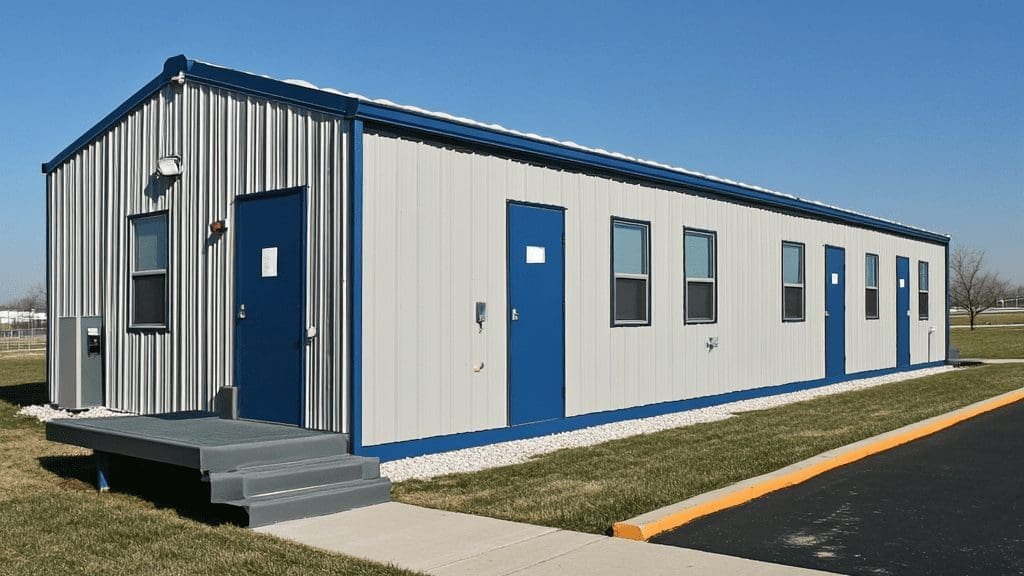
Selecting the appropriate size for a temporary shed is essential to ensure it meets your storage needs without taking up excessive space. The right size will depend on the items you intend to store, the available outdoor space, and any specific functional requirements, such as using the shed as a workspace. Proper sizing can help maximize storage efficiency and make the best use of your property.
Assessing Your Storage Needs
The first step in choosing the right shed size is to assess what you plan to store. Small portable storage sheds are ideal for compact storage needs, like garden tools, seasonal items, or even bikes. However, if you plan to store larger items, such as lawn equipment, patio furniture, or a combination of various tools, you’ll need a larger model. Consider creating a list of items you intend to store in the shed, as this will give you a clear picture of the space requirements.
For guidance on various storage options, the Portable Sheds Complete Guide offers helpful insights on different sizes, materials, and layouts tailored to a range of needs.
Common Shed Sizes and Their Uses
- Small Sheds (20-50 sq. ft.): Ideal for limited storage needs, small sheds are typically used to store gardening tools, pots, and small seasonal items. These sheds are often compact enough to fit in tight spaces like side yards or patios and are best suited for users who need basic storage without a large footprint.
- Medium Sheds (50-100 sq. ft.): Medium-sized sheds are more versatile and can accommodate lawnmowers, bicycles, and larger tools. This size is excellent for homeowners who require extra storage for outdoor equipment or want a small workspace in addition to storage.
- Large Sheds (100+ sq. ft.): Large temporary sheds provide ample space for bulky items, multiple bikes, or even small machinery. They’re ideal for those with extensive storage needs, including contractors who may use the shed to store work tools and equipment temporarily on job sites.
Considering Your Outdoor Space
Evaluate the available space in your yard or property to determine where the shed can be placed. Ensure you allow for enough clearance around the shed for easy access and ventilation. It’s essential to measure the dimensions of your chosen location and compare them with potential shed sizes. This ensures the shed fits comfortably and does not disrupt the landscape or infringe on property boundaries.
Maximize Storage Efficiency
Once you’ve chosen a size, consider adding shelving or storage racks to organize items and make the most of the vertical space. Efficient organization can make a smaller shed feel larger and ensure that you have ample room for all your belongings.
In summary, choosing the right size for a temporary shed involves balancing storage needs with available space, ensuring you have a solution that’s both practical and efficient.
Installation and Setup of Temporary Sheds
Setting up a temporary shed is often a straightforward process, as most models are designed for easy assembly. Whether you’re setting up a small portable storage shed or a larger movable structure, proper planning and attention to detail during installation can enhance stability and prolong the shed’s lifespan. Here’s a guide to help you with the installation and setup of temporary sheds.
Step-by-Step Guide to Setting Up a Temporary Shed
- Prepare the Installation Area: Start by selecting a flat, stable area for the shed. Clear the area of any debris, rocks, or plants that might interfere with the installation. For added stability, consider leveling the ground or placing pavers as a foundation for the shed. A solid, level surface reduces the risk of tilting or sinking and helps prevent water from pooling around the shed’s base.
- Lay Out and Organize Parts: Unbox all shed components and organize them by type. This step can save time by ensuring that each part is easily accessible when needed. Temporary sheds often include labeled parts, making it easier to identify each component during assembly.
- Follow Manufacturer Instructions: Most temporary sheds come with step-by-step instructions tailored to the specific model. Carefully follow the instructions to ensure all parts are correctly installed. Many temporary sheds feature interlocking panels or snap-together frames, allowing users to assemble them with minimal tools.
- Secure the Shed: Once the shed is fully assembled, secure it to the ground using anchors or stakes, especially if you live in a windy area. Some models come with built-in anchor points for added stability, which can be driven into the ground to prevent shifting. This extra step provides stability and minimizes the risk of damage from harsh weather.
For those who need a more substantial setup, portable building sheds offer a semi-permanent solution with the flexibility to move when needed. Visit our Portable Building Sheds Guide for tips on creating a larger, yet still portable, shed.
DIY vs. Professional Installation
For small portable storage sheds or collapsible models, DIY installation is typically manageable for most users. However, for larger sheds or those with additional features, professional installation might be worth considering. Professionals can ensure that the shed is properly anchored and leveled, reducing the likelihood of future issues. Professional setup is also advisable if the shed will be used as a workspace or needs added structural stability.
Installation Safety Tips
- Wear Protective Gear: During setup, wear gloves and eye protection, especially when handling metal components or using tools.
- Check Stability as You Go: After assembling each section, check for stability. If any parts feel loose, reinforce them before proceeding.
- Inspect for Missing or Damaged Parts: Before fully securing the shed, inspect it for any missing parts or signs of damage to ensure a secure setup.
By following these steps, the installation process becomes efficient and safe, ensuring your temporary shed is set up for optimal stability and functionality. Proper setup is key to making your shed a reliable storage solution for all your needs.
Maintenance Tips for Temporary Sheds

Proper maintenance of a temporary shed ensures its durability, functionality, and appearance over time. While temporary sheds are often made from low-maintenance materials, they still benefit from regular care. Simple upkeep can prevent wear and tear, allowing you to get the most value out of your investment. Here are some essential maintenance tips for small portable storage sheds, movable storProper maintenance of a temporary shed ensures its durability and longevity. Even though temporary sheds are generally low-maintenance, regular care can help prevent wear and tear, preserving their appearance and functionality. Here are some essential maintenance tips for small portable storage sheds, movable storage sheds, and collapsible storage sheds.
1. Regular Cleaning
Keeping the shed clean is crucial for its upkeep. For plastic and metal sheds, wash the exterior with mild soap and water to remove dirt and debris. Avoid harsh chemicals that can damage the shed’s surface. Fabric sheds can be brushed off with a soft broom or gently rinsed with water. Regular cleaning helps maintain the shed’s appearance and reduces the buildup of dirt that can affect its material over time.
2. Inspect for Structural Integrity
Conduct regular inspections to identify any signs of damage. Check the shed’s walls, roof, and doors for cracks, rust, or loose parts. Hinges, locks, and handles should also be checked frequently, as these parts endure frequent use. For fabric sheds, inspect for tears or worn areas that may need reinforcement. Addressing minor issues early prevents them from becoming more significant problems.
3. Moisture and Rust Protection
Moisture can cause deterioration, especially in metal sheds, so it’s essential to prevent rust. Apply a rust-resistant coating if needed, particularly in humid areas. Wooden sheds benefit from a water-resistant sealant to protect against rot. If your shed sits in a damp area, consider elevating it slightly to keep water away from the base. For more information on durable, weather-resistant options, visit the About Us page of a reliable provider.
4. Secure and Anchor
Securing your shed properly is essential, especially in areas prone to strong winds. Check the anchor points regularly to ensure stability. If the shed is movable, re-anchor it periodically to keep it secure. Ground stakes and additional weights can enhance stability, keeping your shed safe in adverse weather.
5. Seasonal Care
Seasonal changes often call for extra maintenance. In winter, clear off any snow or debris from the roof to avoid excess weight. During warmer months, ensure adequate ventilation to prevent mold and mildew buildup. By adjusting maintenance according to the season, you can protect the shed and keep it functional.
6. Storing Collapsible Sheds
For collapsible sheds used seasonally, proper storage is essential. Clean and dry all components before storing in a dry, protected space to prevent mold. Properly folding and storing collapsible sheds extends their life and ensures they’re ready for reuse.
For additional maintenance tips or assistance with any aspect of temporary shed care, feel free to reach out through the Contact page. Regular upkeep ensures that your temporary shed remains a dependable storage solution for years to come.
FAQs for Temporary Storage Sheds
- How long do temporary sheds last?
Temporary sheds, depending on their material and maintenance, can last several years. High-quality sheds made from durable materials like metal or resin can last up to 10-15 years with proper care. Fabric or collapsible sheds may have a shorter lifespan of around 3-5 years. - Do temporary sheds require a foundation?
Most temporary sheds don’t require a permanent foundation. However, placing them on a leveled surface, like pavers, gravel, or a wooden platform, can improve stability, prevent sinking, and extend the shed’s life. - Are permits required for temporary sheds?
Permit requirements vary by location and shed size. Small portable storage sheds often do not require permits, but larger or more permanent-looking temporary structures might. Check with local zoning or building authorities for specific regulations. - Can I move a temporary shed once it’s set up?
Yes, one of the main advantages of temporary sheds is their mobility. Movable storage sheds are designed to be easily relocated, especially if they are small and lightweight. Larger sheds may require disassembly before moving. - What’s the best way to secure a temporary shed in windy conditions?
To secure a temporary shed, use ground anchors, stakes, or weights. Many sheds come with built-in anchor points, but adding sandbags or heavy weights around the base can provide extra stability in high winds. - Are temporary sheds waterproof?
Most temporary sheds are weather-resistant but not entirely waterproof. Plastic, metal, and treated fabric sheds can handle moderate rain and snow, but extreme weather may require additional waterproofing measures, such as sealants or tarps. - What is the best material for a temporary shed?
The best material depends on the intended use and climate. Resin and plastic are low-maintenance and weather-resistant, while metal offers greater durability and security. Fabric sheds are highly portable but may need more frequent maintenance. - Can I use a temporary shed as a workspace?
Yes, many temporary sheds can serve as small workspaces. Add insulation, lighting, and ventilation to make the space more comfortable for extended use. Always check local zoning rules if using the shed as a regular workspace. - Do temporary sheds come with flooring?
Not all temporary sheds include flooring. Some models come with built-in floors, while others are designed to sit directly on the ground. You can add flooring with materials like plywood, vinyl, or pavers if desired. - How do I prevent mold and mildew in a temporary shed?
Proper ventilation is key to preventing mold and mildew. Ensure your shed has vents, keep the doors open occasionally to allow airflow, and avoid storing wet items inside. For fabric sheds, allow the fabric to dry thoroughly before folding it away.
 Container Cafe
Container Cafe

